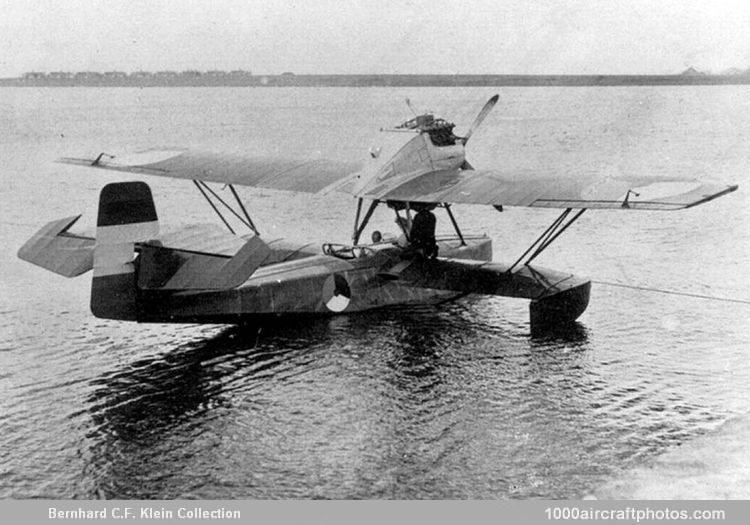Therefore on December 27, 1922, the N.V. Nederlandsche Vliegtuigenfabriek Fokker at Amsterdam received an order for one three-seat shipboard catapult-launched light reconnaissance flying boat and the B.II was designed by Walter Rethel. The crew was seated in a all-metal hull, the open pilot seat was placed in front of the bottom wing on the port side of the boat hull. Beside it on the starboard side was an open tub without windscreen for the observer, while the gunman was seated in an open tub directly aft of the wing in the center of the fuselage. The sesquiplane had a fabric covered upper wing, while the lower wing was constructed of plywood and it could be fitted with a wheel landing gear for land operations. Power plant was a 360 hp Rolls-Royce Eagle VIII twelve-cylinder liquid-cooled V-engine.
The B.II was built at the Fokker plant at Veere, 70 mls (113 km) south of the Fokker plant at Schiphol, and transported to the Naval Air Camp Schellingwoude, near Amsterdam, the Netherlands, where it was first flown from the water on December 15, 1923. After test flights the B.II was offered to the MLD for trials, these were executed by the naval officer H. J. Takens. Despite the military markings on hull and wings, it was not accepted as it did not comply to the wishes and demands of the MLD. The sole prototype was subsequently scrapped."
Span: 44 ft 3 in (13.49 m)
Length: 32 ft 6 in (9.91 m)
Height: 12 ft 6 in (3.81 m)
Empty: 3,740 lb (1,696 kg)
Gross: 5,290 lb (2,400 kg)
Cruise speed: 109 mph (175 km/h)
Max speed: 118 mph (190 km/h)
